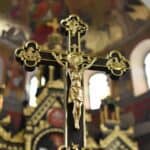Introduction
The Camino de Santiago, also known as the Way of St. James, is one of the most famous pilgrimage routes in the world. It leads to the historic city of Santiago de Compostela in Galicia, Spain, where the remains of St. James the Apostle are believed to be buried. This ancient pilgrimage has been attracting travelers, adventurers, and spiritual seekers for centuries, offering a unique mix of culture, history, and breathtaking landscapes.
History of the Camino de Santiago
The Camino de Santiago dates back to the 9th century, when the tomb of St. James was discovered in Galicia. The pilgrimage gained immense popularity during the Middle Ages, becoming one of the three major Christian pilgrimages alongside Rome and Jerusalem. Over time, various routes developed, each offering a distinct experience, cultural landmarks, and natural beauty.
Despite declines in the number of pilgrims during the Renaissance and modern periods, the Camino saw a resurgence in the late 20th century, becoming a significant journey not only for religious pilgrims but also for those seeking adventure, self-discovery, and cultural exploration.
Popular Routes of the Camino de Santiago
There are several major routes leading to Santiago de Compostela, each with its unique characteristics:
1. Camino Francés (French Way)
- The most popular route.
- Starts from Saint-Jean-Pied-de-Port in France.
- Covers approximately 800 km (500 miles).
- Passes through cities like Pamplona, Burgos, and León.
2. Camino Portugués (Portuguese Way)
- Begins in Lisbon or Porto, Portugal.
- A shorter and less crowded alternative.
- Offers beautiful coastal and inland paths.
3. Camino del Norte (Northern Way)
- Follows Spain’s northern coastline.
- Less crowded but more challenging due to its hilly terrain.
- Offers stunning ocean views and lush green landscapes.
4. Camino Primitivo (Original Way)
- The oldest route, believed to be the original path taken by pilgrims in the 9th century.
- Begins in Oviedo, Asturias.
- More challenging but rich in historical and natural beauty.
5. Via de la Plata (Silver Way)
- Starts in Seville, Andalusia.
- One of the longest routes, covering over 1,000 km.
- Less traveled, ideal for those seeking solitude and a deeper connection with nature.
The Experience of Walking the Camino
Walking the Camino de Santiago is an unforgettable experience that offers numerous benefits:
1. Spiritual and Personal Growth
Many people walk the Camino as a spiritual journey, whether for religious reasons or personal reflection. The long walk provides time for introspection and self-discovery.
2. Cultural and Historical Immersion
Pilgrims pass through medieval villages, ancient churches, Roman bridges, and UNESCO World Heritage sites, gaining insights into Spain’s rich history and traditions.
3. Physical and Mental Well-being
Walking for several weeks strengthens the body and mind. The daily routine of walking, eating, and resting promotes a healthier lifestyle and mental clarity.
4. Community and Camaraderie
Pilgrims from around the world come together, forming deep connections and friendships. The Camino fosters a unique sense of community, with fellow travelers sharing stories, meals, and experiences.
Santiago de Compostela – The Final Destination
After weeks of walking, pilgrims arrive at Santiago de Compostela, a city rich in history and culture. The final stop is the magnificent Santiago de Compostela Cathedral, where the tomb of St. James is located.
Must-Visit Attractions in Santiago de Compostela
- Santiago de Compostela Cathedral – A masterpiece of Romanesque, Gothic, and Baroque architecture.
- Praza do Obradoiro – The main square and a gathering place for pilgrims.
- Monastery of San Martiño Pinario – One of the largest and most important monasteries in Spain.
- Museo do Pobo Galego – A museum showcasing Galician culture and history.
Tips for Walking the Camino
- Plan Your Route – Choose a route based on your experience level, time, and interests.
- Pack Light – Carry only essentials like a good backpack, comfortable shoes, and weather-appropriate clothing.
- Stay Hydrated and Eat Well – Energy-rich foods and plenty of water are crucial.
- Embrace the Journey – Enjoy the experience without rushing; the Camino is about the journey, not just the destination.
Conclusion
The Camino de Santiago is more than just a walk; it is a transformative experience filled with history, culture, and personal growth. Whether seeking adventure, spiritual enlightenment, or a break from modern life, the Camino offers something for everyone. If you are considering taking this pilgrimage, prepare yourself for an unforgettable journey through one of the world’s most iconic and meaningful routes.




